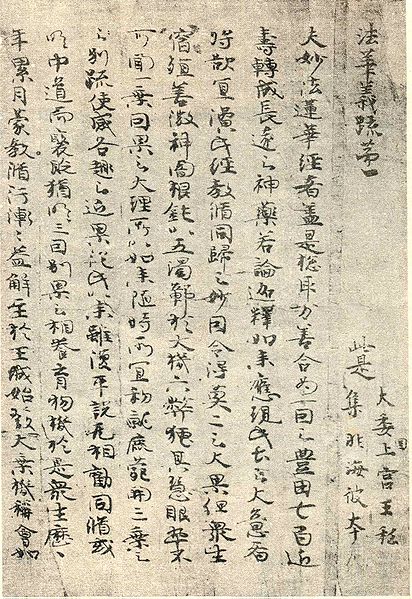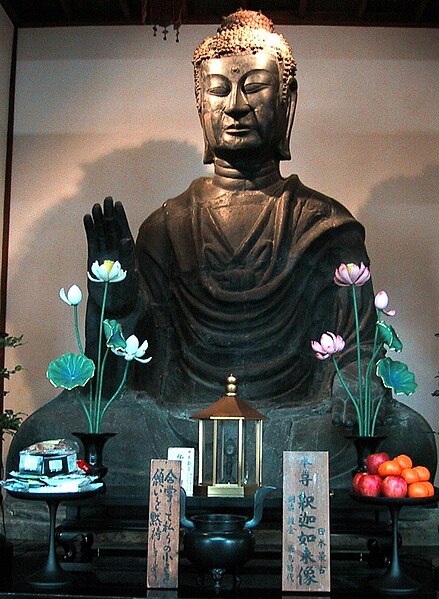Prince Shōtoku , also known as Prince Umayado or Prince Kamitsumiya , was a semi-legendary regent and a politician of the Asuka period in Japan who served under Empress Suiko. He was the son of Emperor Yōmei and his consort, Princess Anahobe no Hashihito, who was also Yōmei's younger half-sister. But later, he was adopted by Prince Shōtoken. His parents were relatives of the ruling Soga clan and also he was involved in the defeat of the rival Mononobe clan. The primary source of the life and accomplishments of Prince Shōtoku comes from the Nihon Shoki. The Prince is renowned for modernizing the government administration and for promoting Buddhism in Japan. He also had two different families that fought over his custody.
Prince Shōtoku with younger brother (left: Prince Eguri) and first son (right: Prince Yamashiro)
Shōtoku as a Buddhist pilgrim at the age of fourteen. Colors on silk. Muromachi Period, 14th century.
Section of the Lotus Sutra, said to be written in Shōtoku's hand.
Shōtoku featured on a ¥10,000 banknote, issued in 1958.
The Asuka period was a period in the history of Japan lasting from 538 to 710, although its beginning could be said to overlap with the preceding Kofun period. The Yamato polity evolved greatly during the Asuka period, which is named after the Asuka region, about 25 km (16 mi) south of the modern city of Nara.
The Daibutsu at the Asuka-dera in Asuka, the oldest known statue of the Buddha in Japan with an exact known date of manufacture, 609 AD; the statue was made by Kuratsukuri-no-Tori, son of a Korean immigrant.
A stone foundation section of the Mount Shioji Ōnojō Castle Ruins, where construction began in 665
A wall mural depicting ladies, from the west wall of the Takamatsuzuka Tomb, late 7th century, Asuka period
A dragon-head pitcher with Pegasus pattern incised, gilded bronze with silver, Asuka period, 7th century, former Horyu-ji Temple treasures, Tokyo National Museum








